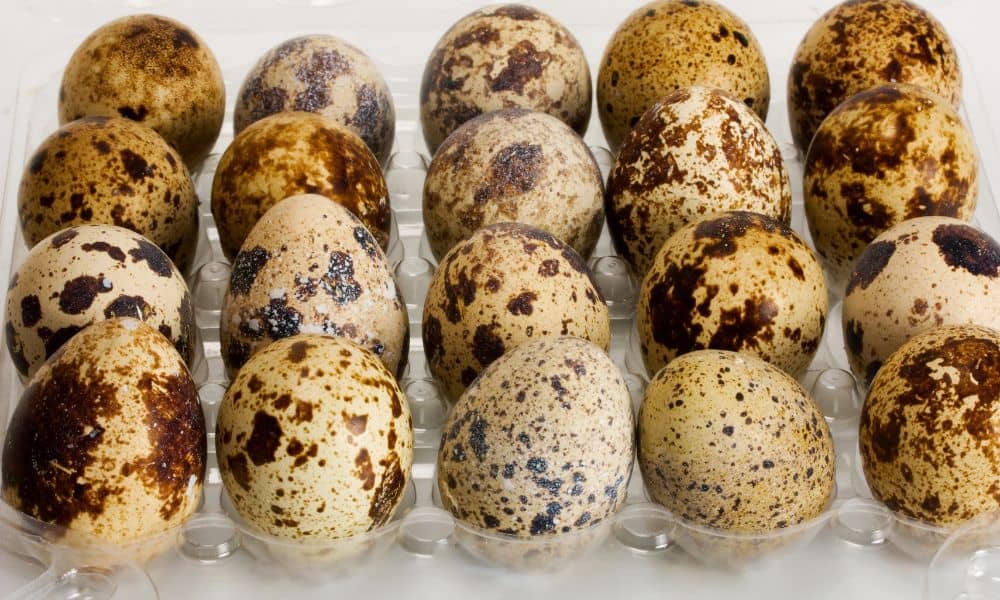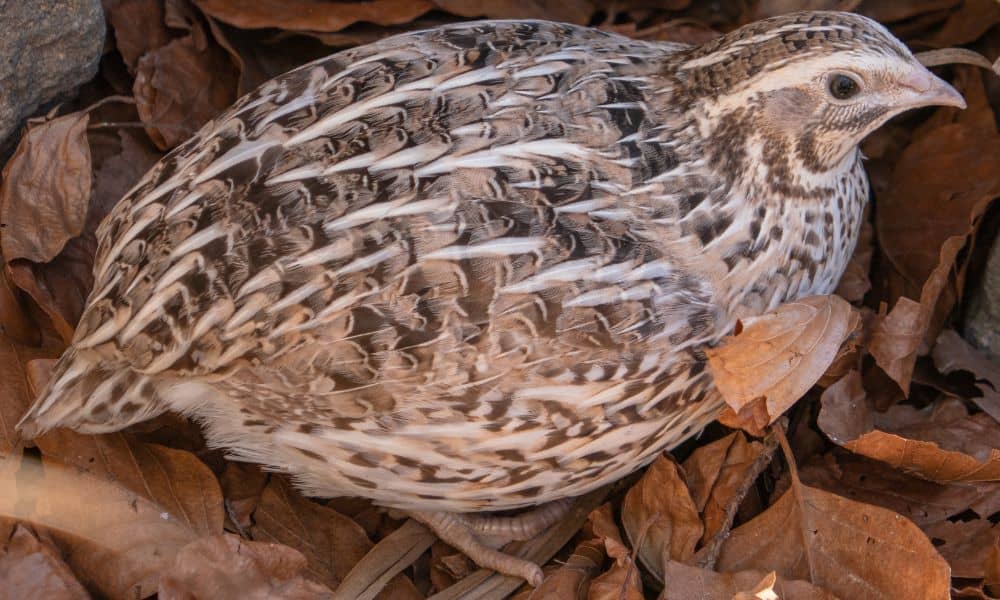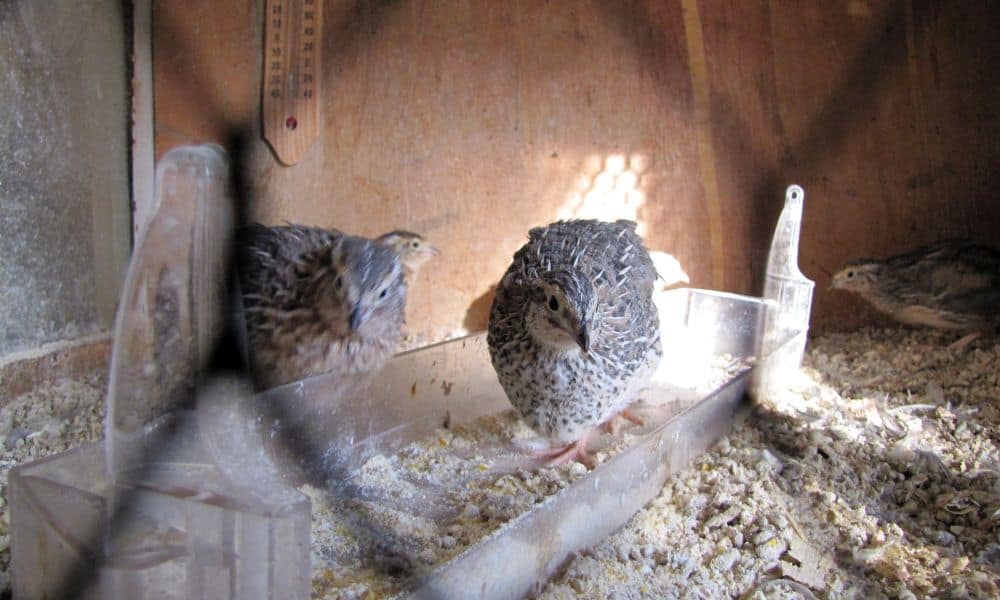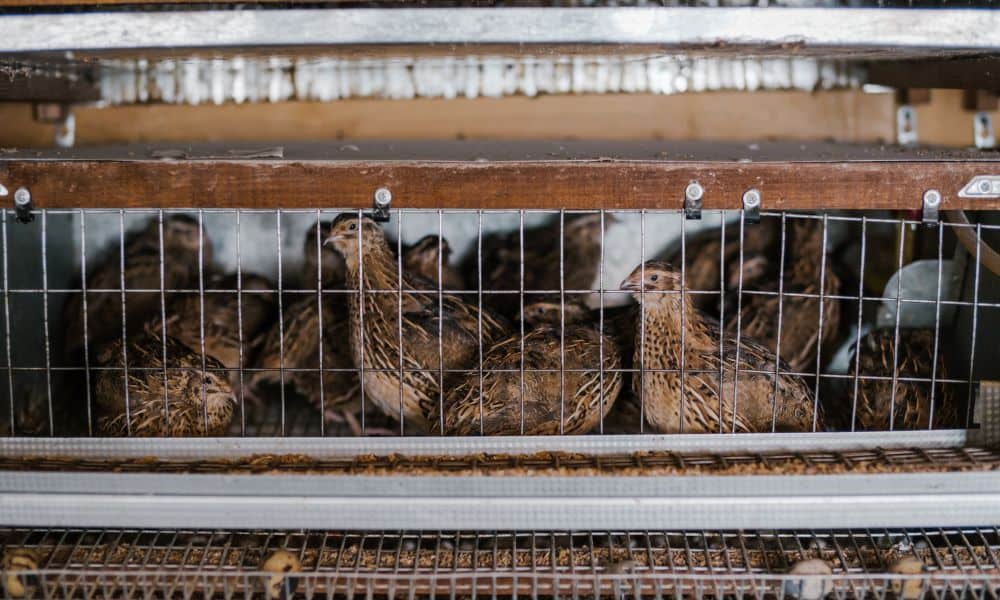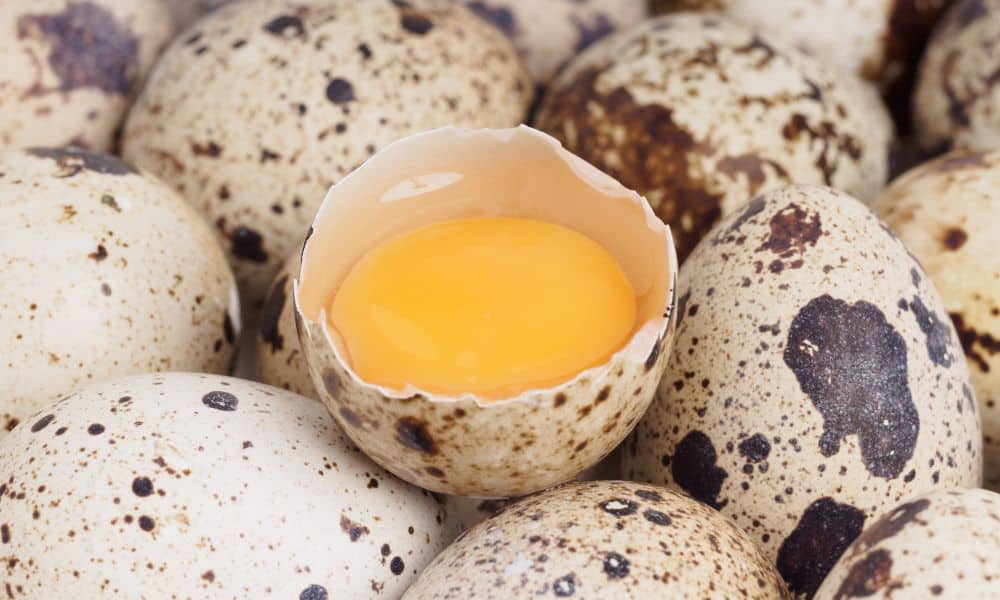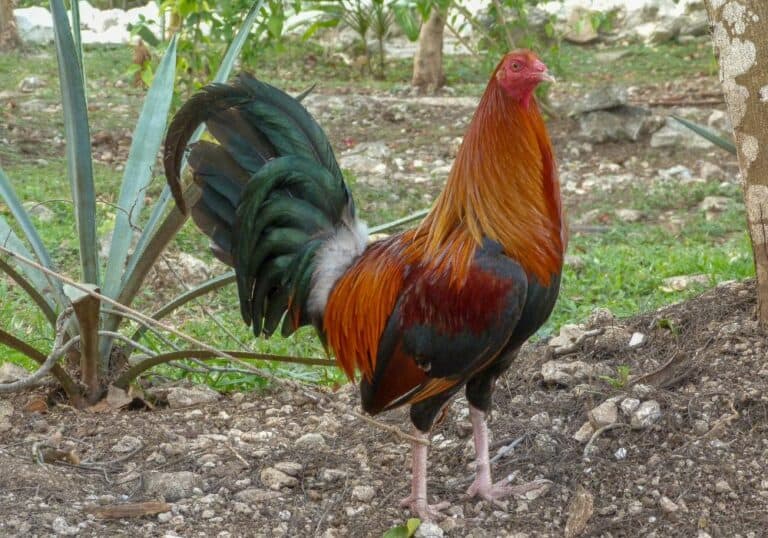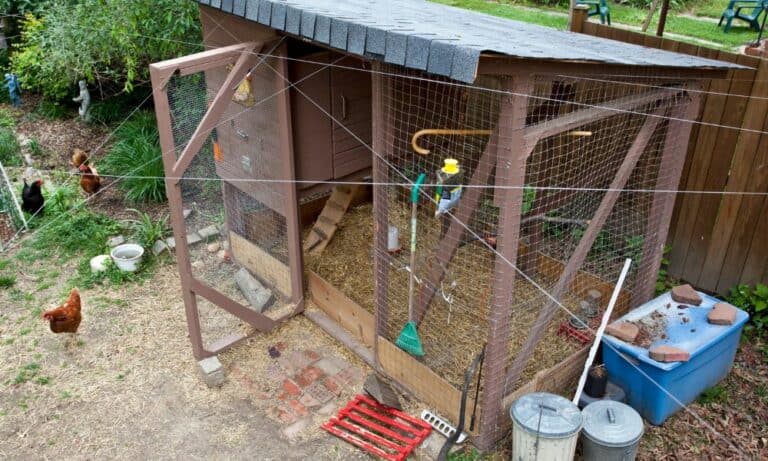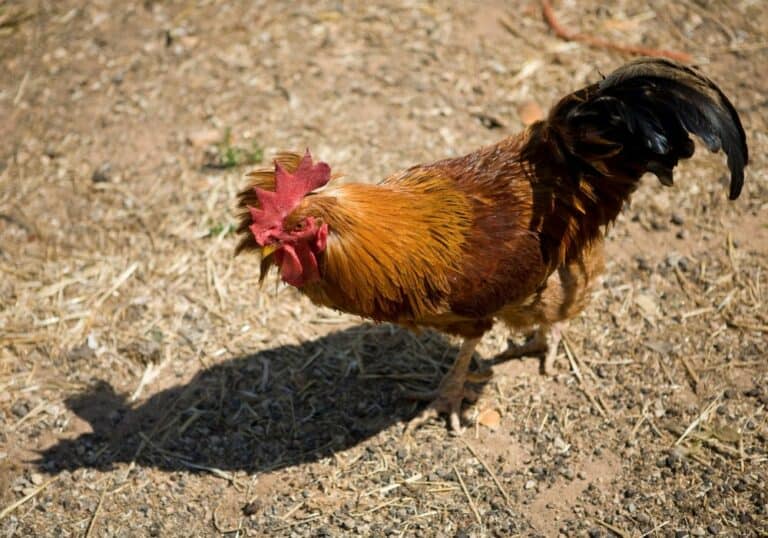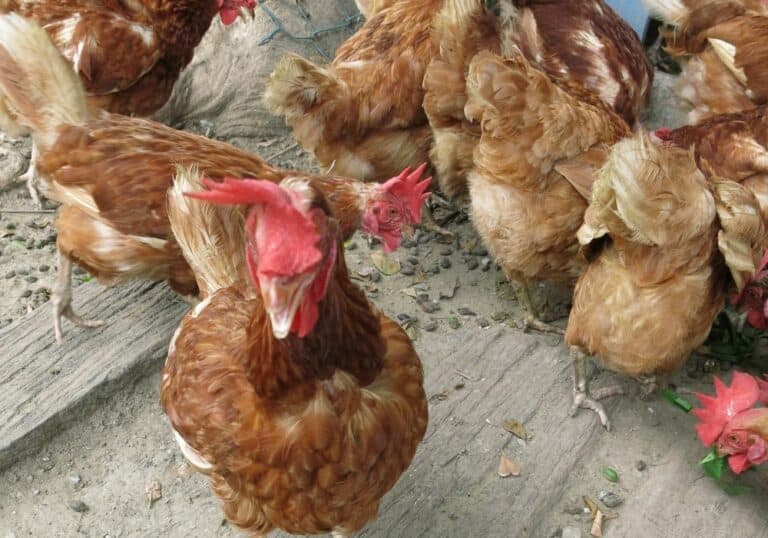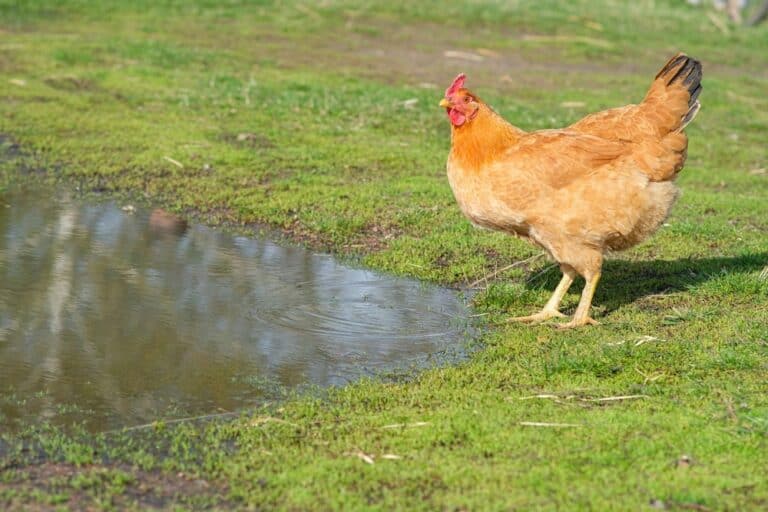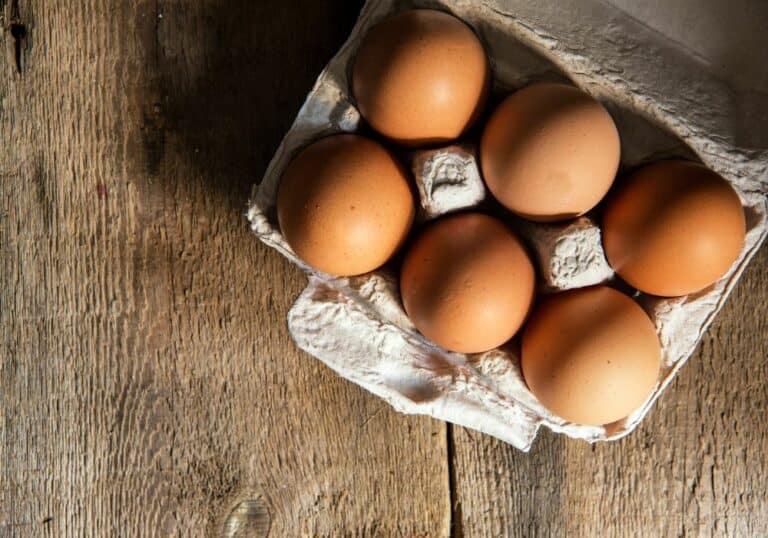Almost everyone can recognize a chicken egg. And many farmers are familiar with duck, goose, and turkey eggs. But what about quail eggs? To the uninitiated, they look like candy or chocolate. In reality, they’re a rich source of protein and profit. Let’s learn more about them.
First off, quail is a generic term that covers lots of different birds ranging from wild game to commercial breeding lines. We won’t cover every species or genus here, but since these birds have similar looks and traits, the facts we’ll discuss cut across the various forms. Let’s begin!
What Are Quail Eggs
Quail eggs are tiny eggs laid by birds called quails. The eggs are usually white, tan, or cream, with dark brown spots on their hard shells. They have a relatively large yolk and a very thin white. In South America, quail eggs are common toppings for burgers and hotdogs. They’re fixed to the snack using a toothpick. In Japan, they’re popular in sushi and bento lunches.
Other examples of quail egg dishes are skewered egg kabobs in Indonesia (aka satays) and deep-fried battered quail eggs in the Philippines (aka kwek kwek). When these eggs are used in sushi, they’re typically raw. But in the other instances we’ve mentioned, the quail eggs are boiled before being battered or impaled. The birds that lay these eggs are ground nesters.
Quails are small and brown, with a lighter belly and a speckled head and back. Their wings have dark spots as well, just like their eggs. The best-known varieties are the European Quail and Japanese Quail. These two look similar but their bird-calls are quite different. Quails are migratory birds that prefer warm weather so they go to Africa or South India for the winter.
European Quails are sometimes called Common Quails. These birds are related to pheasants, but if you breed a Japanese Quail with a European Quail, it affects their fertility, so they’re considered separate species and are named for their place of origin. Both birds are hunted for meat in the wild and can be domesticated for commercial use, providing meat and eggs.
All About Quails
Let’s talk about the bird itself. The two species we’ve mentioned are divided into five sub-species, but their looks are barely distinguishable. A quail weighs 70g to 140g, which is about 2.5 to 5 ounces. They’re quite small but because they migrate annually, they have a relatively large wingspan – 32cm to 35cm (12.5” to 14”). That’s roughly twice the length of their bodies.
Female quails are slightly larger than males, and these birds are gallinaceous, which means they have heavy bodies, nest on the ground, and eat bugs and seeds. Unlike other galliformes that jump and flutter (e.g. chickens, turkeys, and guinea fowls), quails have full flight. But they prefer to hide in the grass and walk away when threatened. They’re well-camouflaged.
These birds are pretty noisy though, so you can spot them by their bird call. They only live for 2 to 3 years and are seasonal layers. Usually, the males migrate first. When the females join in, these girls make shallow ground nests with a few twigs and grasses. They lay 8 to 13 eggs, one every day, then sit on them for 17 to 20 days until they hatch. Babies are quite mature.
They don’t need much tending and can leave the nest within 19 to 20 days, flying and feeding themselves. But they’ll usually stick around another month or two, leaving the family unit 30 to 50 days after they hatch. Being seasonal birds, they don’t couple up and breed until they’re at least a year old. And although they can live two or three years, they only get broody once.
How Quails Make Babies
Apart from European/Common Quails and Japanese Quails, some people keep Button Quails. As their name suggests, they’re much smaller and are mostly raised as pets since their eggs and bodies are too tiny to offer sufficient human nutrition. They weigh 20g to 130g based on their genus (0.7 to 4.6 ounces). Also, in Button Quails, it’s the male birds that hatch the eggs.
Button Quails can fly, but they prefer not to. And most quail species are polyandrous, but one species – the Quail-Plover aka Ortyxelos – is monogamous. It’s also the smallest species, weighing just 20g and barely 10cm long (4”). In polyandrous quails, a female takes multiple mates, laying 4 to 5 eggs for each guy to sit on. She helps him build a shallow ground nest.
After laying one egg a day for 4 to 5 days, she leaves. She might have three or four partners every mating season, laying a total of 12 to 15 eggs. The male hatches the eggs in 12 to 15 days then looks after the babies for another 12 to 15 days. At two weeks, baby Button Quails can fly. At one month, they’re fully independent, and at 3 months, they start their own families.
In domestic settings, quails are quite different. When a bird gets broody, she stops laying eggs until her babies are hatched and grown. But since quails only get broody once, they can continue laying eggs without trying to hatch them. As long as you stop the girls migrating and get the timing right, you can get up to 300 quail eggs a year, which is one laying season.
Mating Habits in Japanese Quails
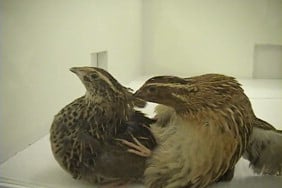
In many quail species, child-rearing is a guy thing. But Japanese Quails are slightly different. Females are still largely polyandrous, but they do most of the hatching themselves. The guys get a few hours of babysitting in a day, but the girls routinely chase the male away when the eggs are about to hatch. They then raise the babies solo. And mating rituals have variations.
Once the male is done mating, he will usually strut around the female to confirm his success. Chickens, guinea fowls, and other gallinaceous birds tend to lay their eggs in the morning hours. But quails – both Japanese and other species – lay their eggs closer to sunset. Also, in Japanese Quail eggs, the main color can sometimes veer towards pale blue with dark spots.
Urban legend suggests Japanese Quails were once kept as songbirds and used in contests. In this breed, birds have close to 30 distinct calls, so it makes sense. But these days, their role is meat and eggs. They like to eat rice, barley, oats, grubs, and bugs. Many can detect and avoid food laced with pesticides or lectin since it seems they can sniff out these toxic substances.
Beyond their commercial farming value, quails are a valuable research subject. Labs around the world keep quails of all species for experiments and genetic study. These scientists zone into areas like toxin identification, cancer exploration, and prenatal development. The birds are good for these specialties because of their early independence and quick sexual maturity.
Fertility in Domestic Quails
Quails are classified as Old World or New World. They’re also categorized by their genus. On that basis, Button Quails are a separate species. They’re only referred to as quails since they look similar. But among ordinary people, these birds are often lumped together. Either way, if your quails are paired up, make sure you collect eggs at least once a day so they don’t hatch.
If a baby bird starts developing inside the shell, that egg is no longer edible for humans. Also, while wild quails wait a year to start laying eggs, domestic Japanese Quails start in 6 weeks. They’re self-sufficient at 20 days, mature at 30 days, and can mate at 40 days. Since quails are so small, they don’t produce much meat. But during their migration, humans trap them.
People use nets to catch and cook them. Since they’re available in such large numbers at this time, they provide a free feast for quail lovers. As an aside, a group of quails is called a covey, bevy, or flock. Close to 100 quail species are known. These include about 20 wild ones and 70 domestic ones. The larger species are reared for meat and eggs while smaller ones are pets.
Although quails rarely fly, they’re migratory, so be sure to cover the top of your quail coop. A wire house works best with some sheltered areas for bad weather. They forage for seeds and insects within their enclosure, but you can also offer game bird feed. While Common Quails are largely brown, Japanese Quails and Button Quails can be brighter and far more colorful.
Colorful Quail Couture
Other feather flavors that you might spot in Button Quails and Japanese Quails include red, blue, silver, white, blonde, and tuxedo – a mix of white and brown. But regardless of their rainbow feathers, quail eggs are always cream, beige, tan, or white with dark brown speckles. And in most quail species, males and females have distinct color patterns to tell them apart.
Just like chickens, quails that are kept for meat are engineered to maximize productivity. It’s why some Japanese Quails can reach 300g (0.7lb). Another interesting feature is that the throat feathers of male Japanese Quails change color in the mating season. They get redder and shorter to attract female attention. But other quail species don’t exhibit this aphrodisiac.
These fellas have another trick too. If they crow in the presence of a young female, she gets to her reproductive age faster! Single males make different sounds from partnered males, so these polyandrous ladies instantly know who’s available. But then again, those mated males are probably busy hatching eggs and raising babies, so they don’t get around all that much.
Now, let’s talk grooming. Quails of all species love their spa treatments. They take dust baths several times a day by pecking, scratching, and flapping at the ground to raise dirt. As loose soil covers their bodies, they preen to maintain their feathers and ditch any parasites. So if you’re raising backyard quails, make sure there’s a section cordoned off for dirty splashing.
Benefits of Quail Eggs
Quail eggs have a larger yolk than other eggs. So when you scramble or bake them, they have a fattier, creamier quality. Flavour-wise, they’re richer than chicken eggs but milder than duck eggs. That said, they’re so small. You need three or four for every duck or chicken egg. Quail eggs cost 3 or 4 as much as chicken eggs, but are about the same price as duck eggs.
Health-wise, larger yolks mean more cholesterol, though eggs count as good cholesterol. The quail eggs also have higher levels of cobalamin (Vitamin B12), anti-oxidants, protein, zinc, and iron. Vitamin B12 contains cobalt, which is good for DNA synthesis. It helps your body break down fatty acids and amino acids, and it’s essential to the formation of red blood cells.
One quail egg has around 14 calories. For comparison, a chicken egg clocks in at 72 calories while a duck egg has 130 calories. But quail eggs have more riboflavin (Vitamin B2) as well as minerals like selenium and supplements like choline. Quail eggs have proportionally more of the proteins and vitamins we’ve listed, but chicken eggs do outshine them in choline content.
Cracking quail eggs for frying or baking is a tough proposition involving specialty scissors or serrated knives. And although it only takes two minutes to boil a quail egg, peeling it is an art that requires a lot of practice and a chilly ice bath. These eggs might also be safer for people with allergies since quail egg cells are homogenate and have ovomucoid trypsin inhibitors.
Germ-Free Goodness
We’ve mentioned the main nutrients in quail eggs, but they also have trace volumes of iodine and lecithin, as well as some sodium, calcium, potassium, folate, phosphorous, and Vitamins A, B1, D, and E. This mineral mix promotes your nerve function, memory, and energy levels.
But one of the scariest things about eggs is salmonella. Luckily, quail eggs are immune since the birds themselves have a higher resting body temperature than these bacteria can stand! Do you know any other trivia about quail eggs? Share some fun facts in the comments below!

